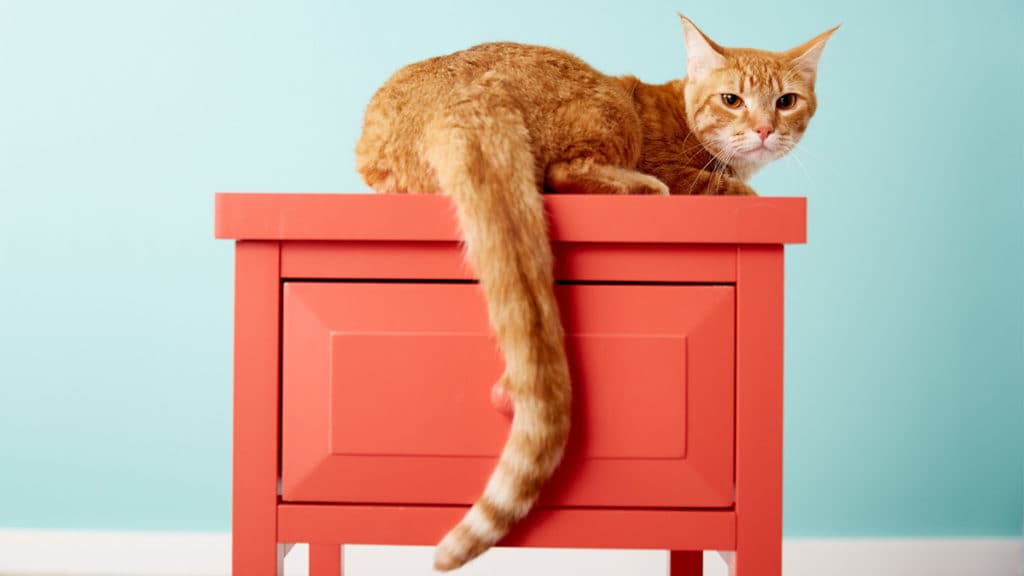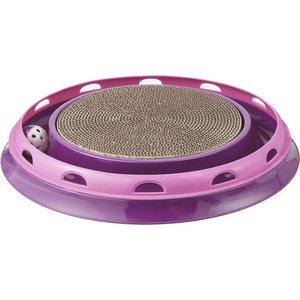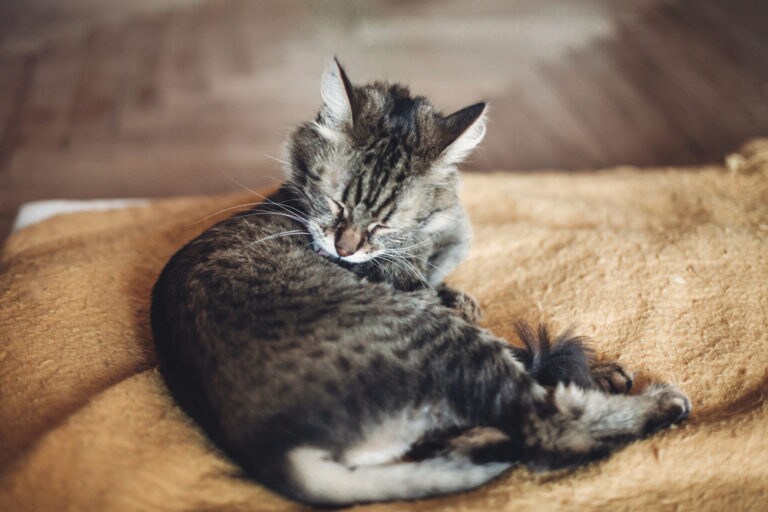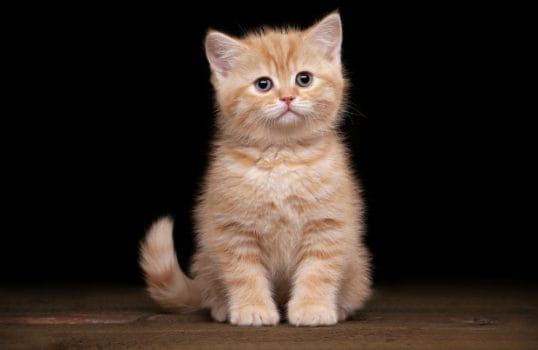Our feline friends don’t communicate with us solely through vocalizations like meows and purrs. A cat’s tail holds a complex language all its own. Every swish, wag, flick and curl contains a hidden message, and understanding cat tail positions and movements can give you deeper insight into your cat’s personality and feelings—leading to a deeper bond with your furry friend, as well as a better sense of whether your cat is sick or in pain.
Dr. M. Leanne Lilly, DVM, DACVB, a veterinary behaviorist at the Behavioral Medicine Clinic at The Ohio State University Veterinary Medical Center in Columbus, Ohio, is an expert in decoding cat tail signals. Here’s what she says our feline friends are communicating with their cat tail movements.
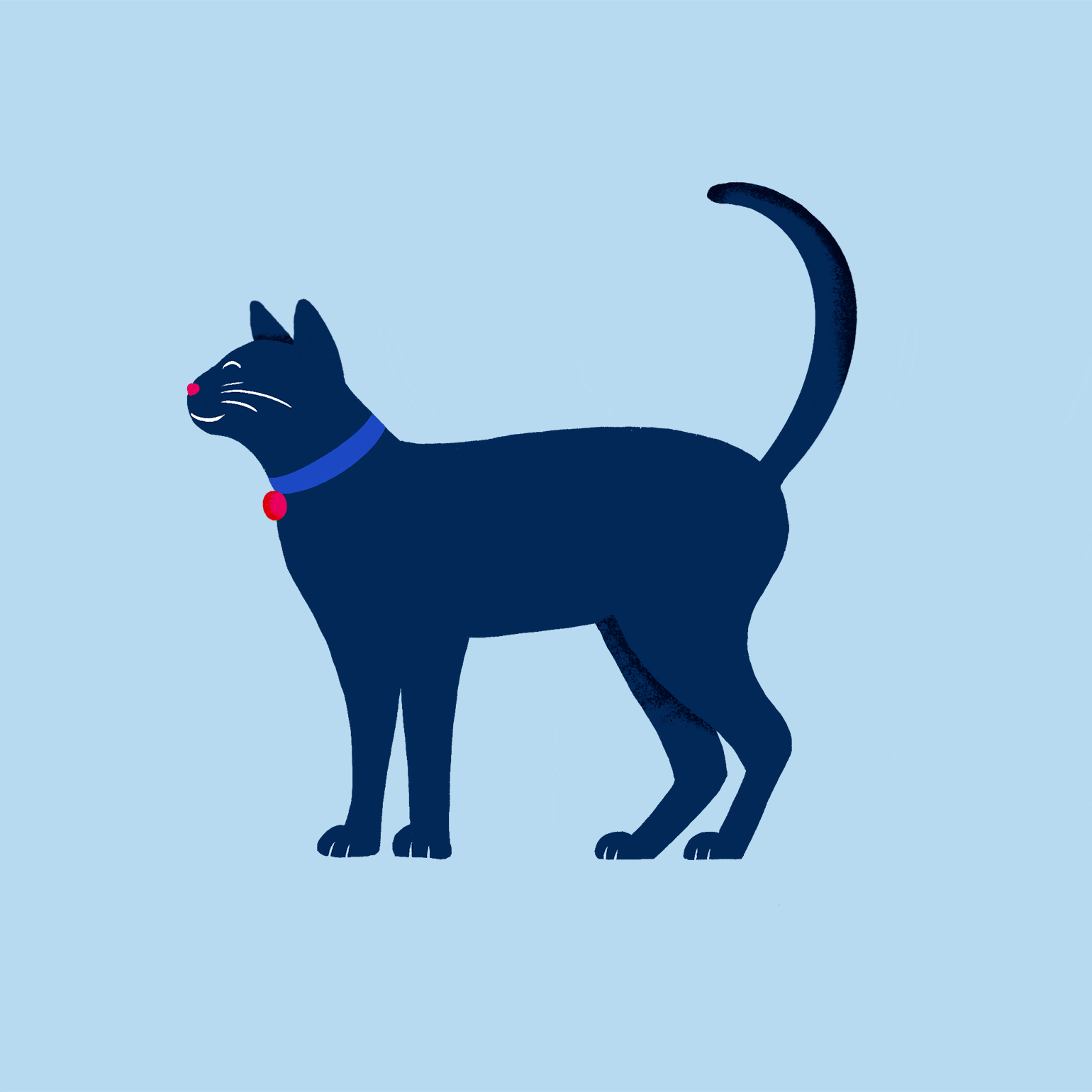
1Swishing
When a cat’s tail is in motion and looks fluid and soft, it’s “swishing.” Generally, this indicates a cat who’s relaxed or calmly interested in what’s happening. At this point, no alarm bells are going off in the cat. They also aren’t sleepy. They may be alert but aren’t worried or concerned about anything around them. With a contented cat on your hands, it’s usually best to just let them hang out and enjoy themselves.
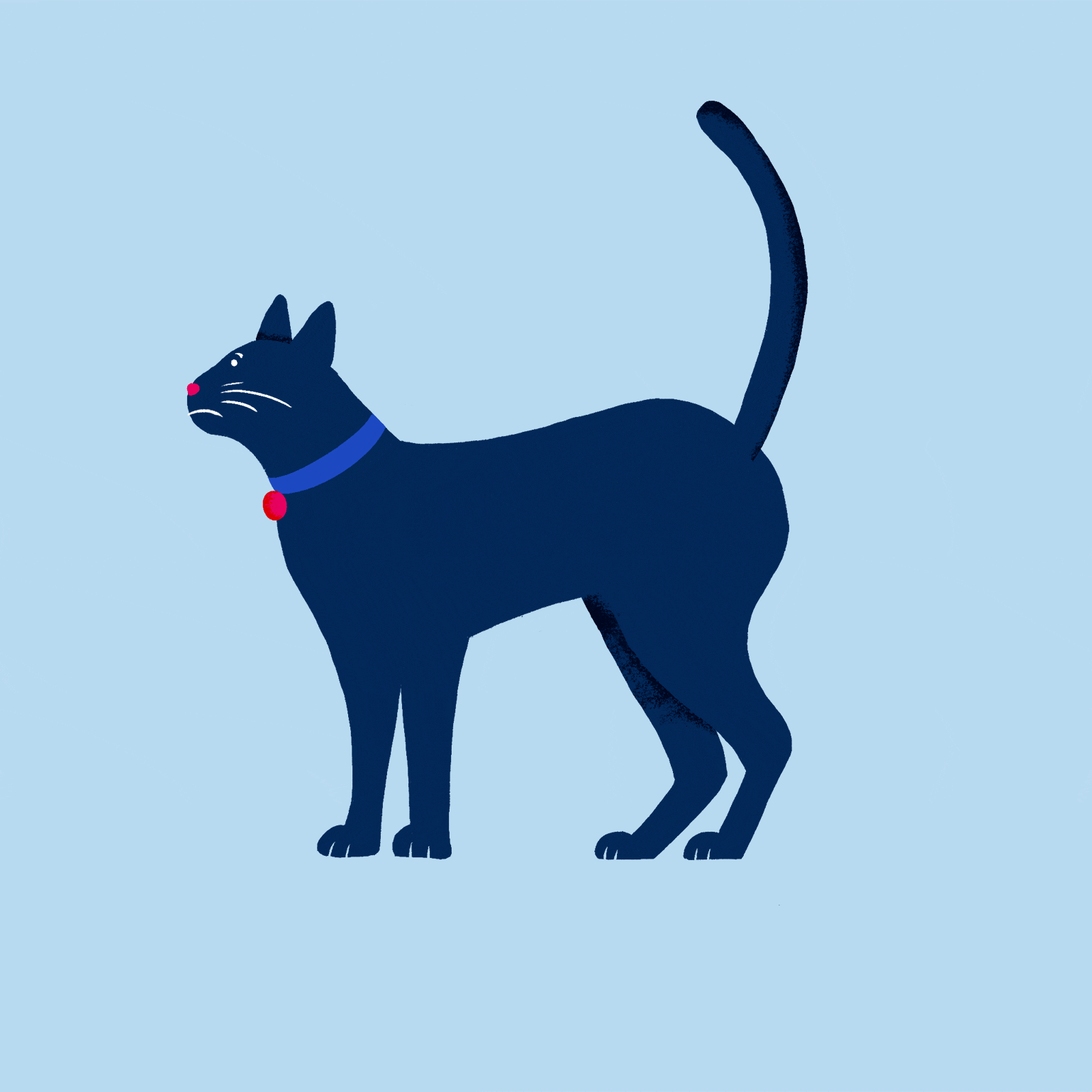
2Flicking
Tail swishing and flicking are subtly different tail movements. With flicking, just the tip of the tail is moving. It may flip back and forth in a rapid motion. This motion can be part of predatory behavior or predatory play—meaning that your cat might see something they want to pounce on, whether for playtime or to attack. Some cats will also experience flicking or “tail quivers” paired with skin rippling down the back. This is a sign of the disease hyperesthesia. If you notice both tail quivers and skin rippling in your cat, contact your veterinarian.
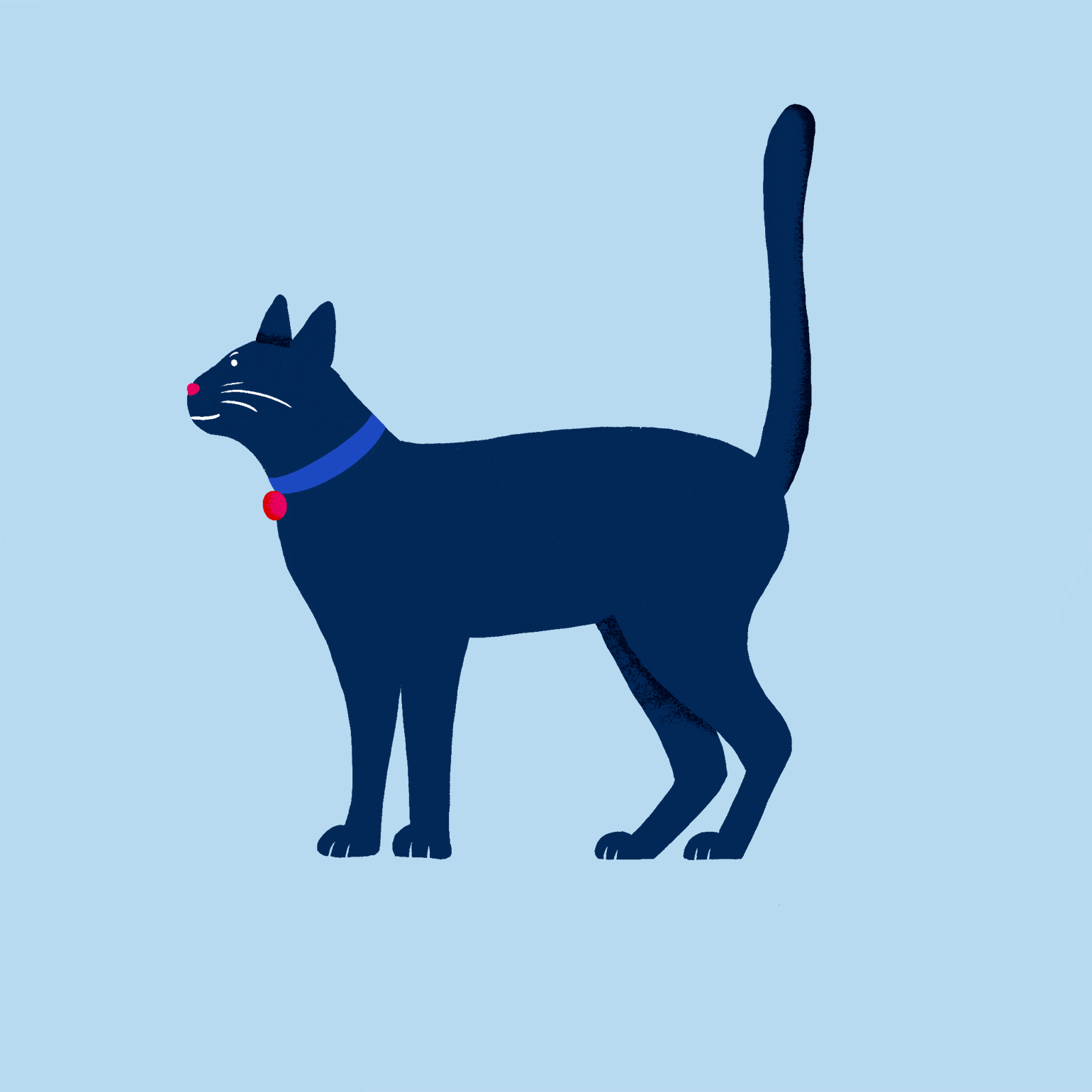
3Flagging
You might sometimes see your cat shaking their tail, like they’re trying to ring a bell, when going to the bathroom. This is called flagging, and it’s a marking behavior. Flagging can become an issue when your cat holds their tail straight up, flicks it, then backs up to urinate outside of the litter box, creating a mess for you to clean up. In some cases, cats engage in “sham marking,” which means they’re engaging in a marking ritual but not urinating. In either case, you may want to report flagging behavior to your veterinarian if you’re having litter box problems. The good news? Neutered male cats are less likely to exhibit this behavior—just another reason to consider neutering your cat.
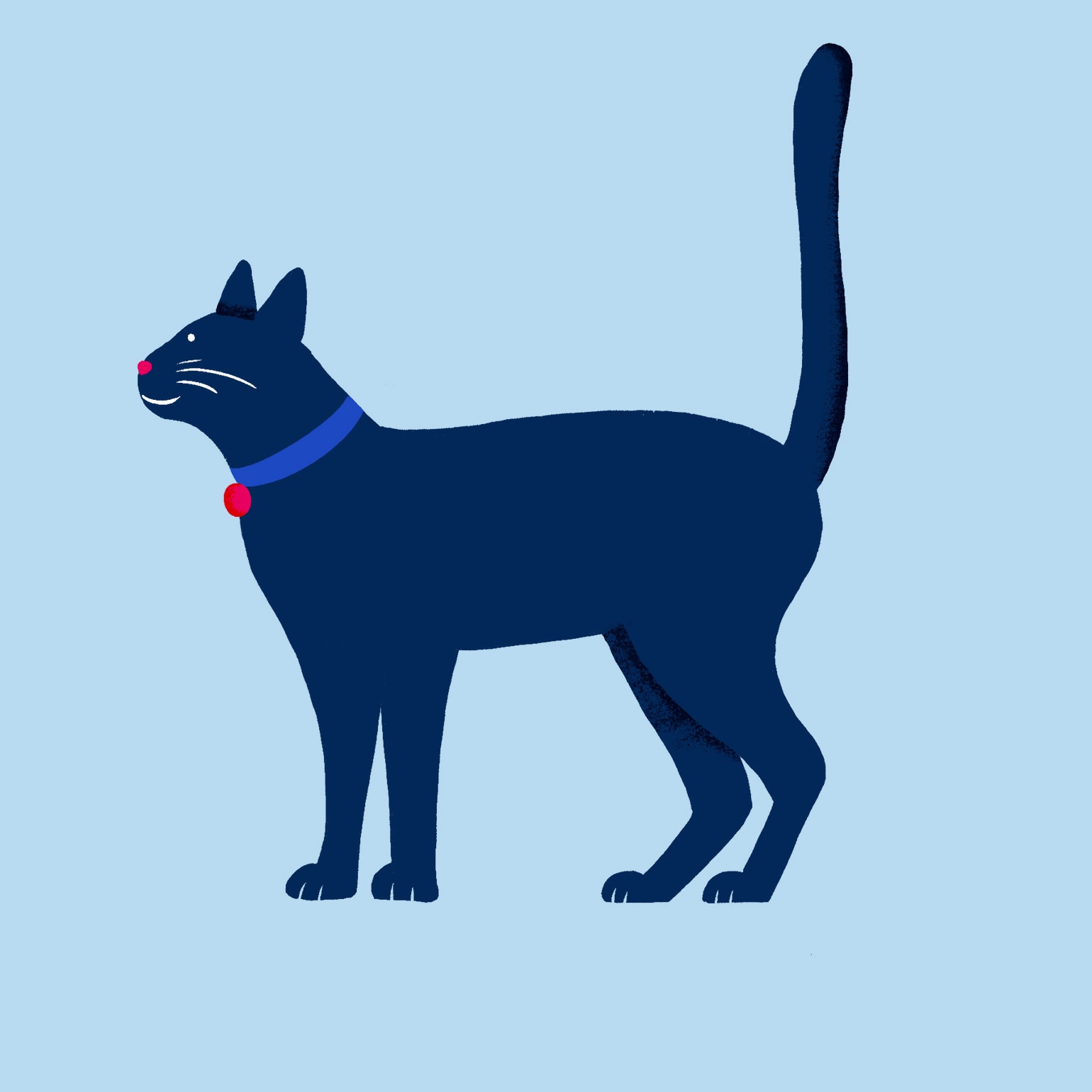
4 Tail Straight Up
A cat holding their tail straight up is feeling attentive and alert. Dr. Lilly explains that this behavior doesn’t necessarily have a positive or negative connotation. It just means the cat understands something is happening and is paying attention to it. They may be feeling excited and happy or stressed and worried. It just depends on the situation, so it will be important to consider the whole picture—your cat’s environment, what other people or pets are present, any new sounds or objects, etc.—if you see your cat with an upright tail.
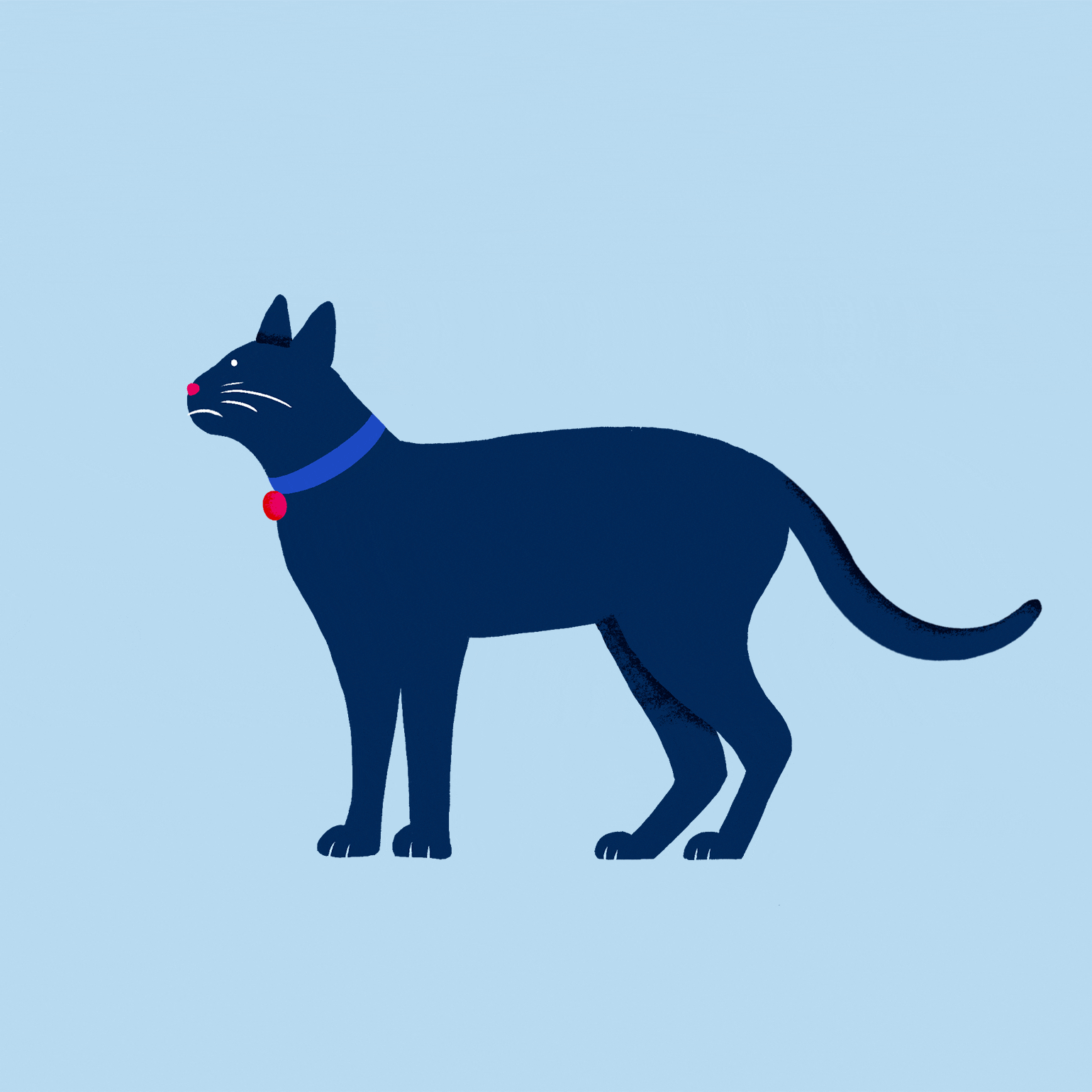
5Lashing
If you notice your cat rapidly swatting their tail to the point where it’s thumping back and forth, they might be starting to feel uncomfortable or fearful. In that situation, it can be helpful to try to remove whatever is making the cat upset—whether that’s an object, person or another critter. Otherwise, your cat may respond to feeling threatened by attacking.
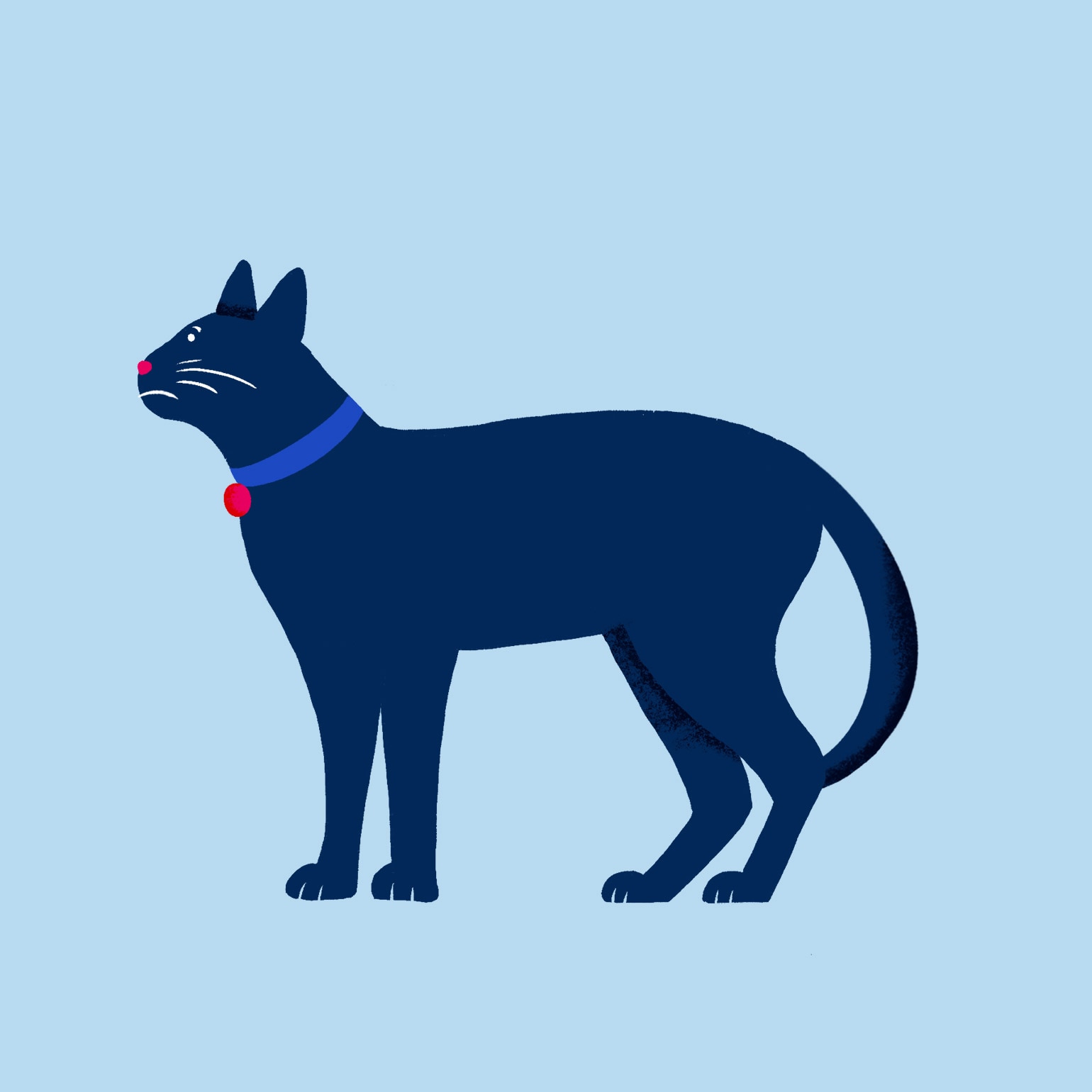
6Lowered or Tucked Tail
Similar to dogs, a lowered tail can mean your cat is feeling uncomfortable or scared. In fact, the closer the tail is to the cat’s body, the less comfortable your cat is feeling. When a cat feels afraid, they attempt to pull in vulnerable parts like their tail. If you can identify what’s frightening your cat, it can be helpful to remove it from their environment if possible. For example, you can take away a loud toy that’s making them feel nervous. However, it’s not usually a good idea to try to move a fearful cat. They may lash out at you in panic because they are so scared.

7Puffed-up Tail
When your cat puffs up their tail, it’s a sign of fear. “Tails should not be bottle brushes,” says Dr. Lilly. A puffed tail can be tucked under a cat, or it can be up and out. Part of the purpose of puffing up the tail, or any other part of your cat’s fur, is to make them look bigger to other creatures around them. It’s a defense mechanism designed to communicate that they’re actually very large and scary and not worth fighting. However, your cat wouldn’t puff their tail if they weren’t feeling threatened to begin with, so the behavior almost always stems from a fearful reaction. Similar to other signs of fear, remove the thing that’s scaring them if you can—but don’t try to move your cat, who’s in panic mode and may respond by trying to protect themselves.
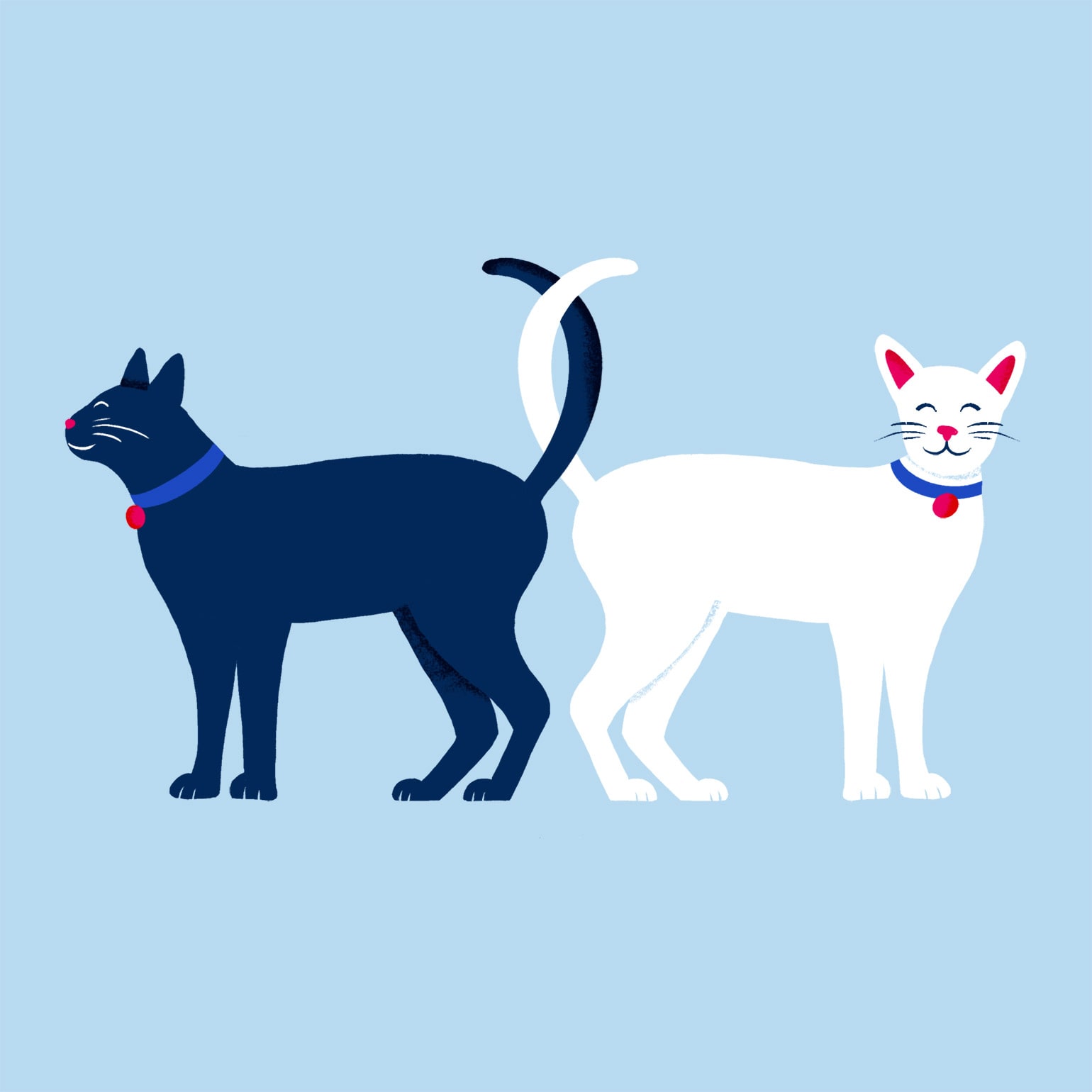
8Wrapping Their Tail Around You or Another Cat’s Tail
If you’ve ever seen cats cuddling curled with their tails around each other, you know how adorable this cat behavior is. It’s also a very pro-social tail behavior. In other words, this is one of the ways cats bond and socialize with each other. It’s a way of marking each other with their scent and signaling who their friends are. If your cat snuggles up next to you with their tail curled around you, it means you’re part of their in-crowd—they like you a lot!
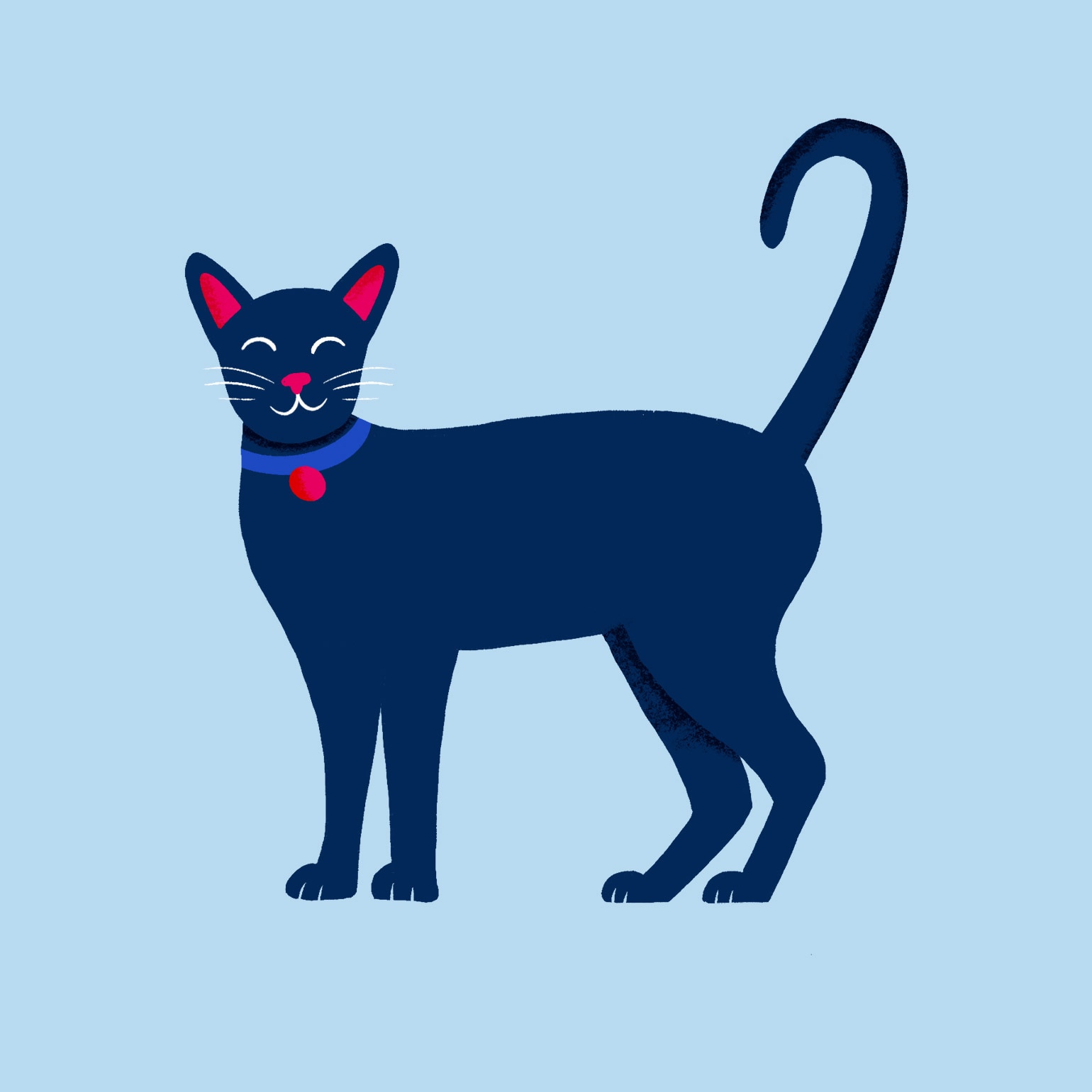
9Question Mark Tail
If your cat bends their tail into the shape of a hook or question mark, this is a very positive sign. According to Dr. Lilly, “question mark tail” is a pro-social behavior. It’s like walking up to another person with a huge smile on your face and your arms open wide. In other words, it’s your cat’s way of giving you a friendly greeting. Don’t hesitate to say “hello” back.
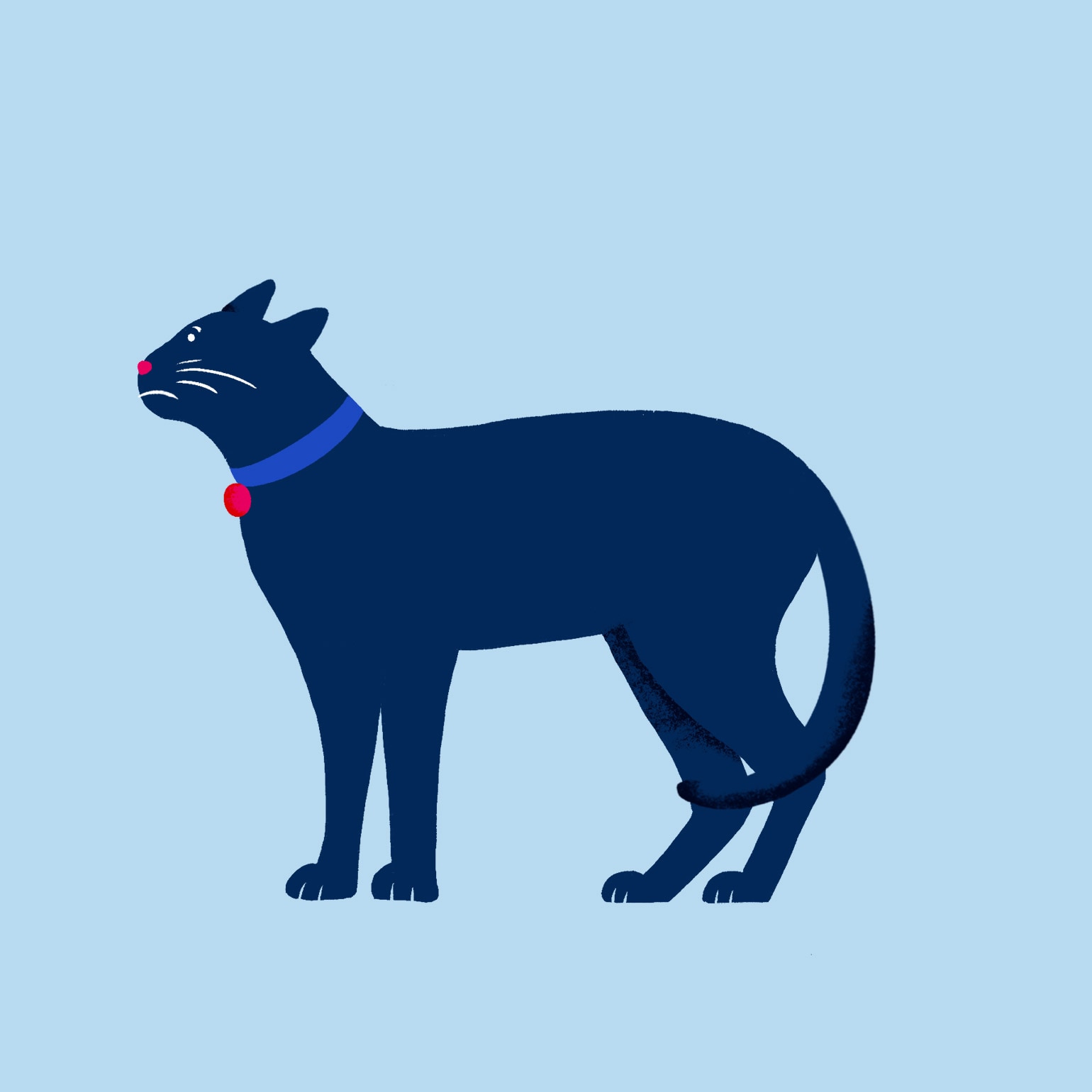
10Tail Curved Around Their Body
Similar to cats with tucked or lowered tails, a cat who is standing up with their tail curled around their body may not be feeling comfortable, because keeping their tail close can be a sign of fear. However, if your cat is lying down, they might curl their tail close to them to relax. Some cats will sleep with their tail splayed out more, though. It just depends on the cat and what tail position they personally prefer. This is another situation where looking at the whole context and considering their normal behavior is important to determine your cat’s mood.
A cat’s tail is one of their most expressive features, and they use it to let us in on a world of feelings and emotions. Once you better understand feline body language and know what your cat is trying to convey, you can respond to them when they’re feeling happy or assist them when they’re stressed. All this knowledge can help you form a deeper bond with your furry friend.
Now you understand what your cat's saying—but do they love you? Check out these 13 ways to tell.
Expert input for this story was provided by: M. Leanne Lilly, DVM, DACVB, Assistant Professor, Behavioral Medicine at The Ohio State University Veterinary Medical Center, in Columbus, Ohio.
Understanding Your Cat
Share:
